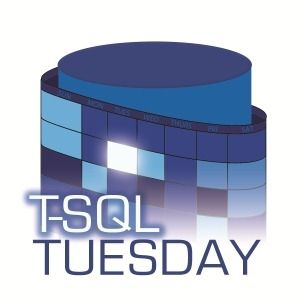Let me start by saying thank you again!
To everyone who joined the conversation and contributed a post to my invitation on a hybrid data world for this month’s #tsql2sday and to Steve, for having me as a host this month!
There were some great posts and opinions so let me try to summarize those for you – in no particular order.

While Deepthi didn’t gather first hand experience working in hybrid environments yet, apparently my invitation inspired her to dig a bit deeper into Microsoft’s offerings for hybrid data organizations and she shared a great list (some of my materials are on there so I may be biased – thank you for the callout!! 🙂 ) of resources she used to get started on this!
While Jeff’s organization has some resources in the cloud, most of their estate is still on premises so you might say, that this is a typical early stage of hybrid.
Given that there is only a very small amount of resources in the cloud, this also allows for very little hands on experience, making training and experience one of the biggest challenges.
As many organizations aren’t willing to invest into such training until it’s almost too late, Jeff has compiled a great list of learning resources for us!
Rob and myself are on the same page here and I want to point out one sentence from his post: As much as I like the idea of everyone moving fully to the cloud, there might always be reasons why that’s not practical.
No every organization is ready (yet?) for a full cloud migration so hybrid allows them to move at their own pace.
He also points out – connecting to last month’s topic – that features available in a cloud-only world are developing quicker than ever. There is no doubt about that and this is probably also one of the reasons for many organizations to even consider hybrid over “just on-prem”.
Glenn took my invitation from a completely different angle – unsurprisingly from a hardware point of view and how he handles his own and recommends others to set up their personal data estate, including (as you’d expect from Glenn 🙂 ) a ton of useful resources and recommendations on how to lay out your infrastructure – no matter if you’re trying to run as much or as little as possible “on prem” (in your home).
Chad starts by pointing out, that many of the things – and I can say we all – look into with cloud technologies are more scratching on the surface and the variety of solutions out there can be so overwhelming that in the end, you know a little bit of everything.
He also brings up another very important point though: Hybrid can help you solving this exact issue in a way. Chan is mostly working with MS SQL Server but also needs MySQL for some tasks. For this, Chan is using Amazon RDS for MySQL, therefore making use of a PaaS offering for a niche (from Chan’s daily workload perspective) technology, therefore not having to worry about all the bits and pieces in the background from installation to operations.
Funny enough, Hugo started his post by admitting, that he was thinking about ignoring this month’s invitation – and with Hugo taking part in almost every T-SQL Tuesday, I was wondering the same thing: “What will Hugo write on this one?”.
And I am glad he chose to take part, because he is bringing up a very important point: In a hybrid world, especially on the cloud side of the house, it’s much easier to get more compute resources and therefore tackle performance issues in SQL queries by just moving a slider to the right. But that slider costs money!
So no matter where you stand on hybrid and modern data architectures – many of the “old” principles on query and execution plan tuning still apply in the cloud and on the edge!
Kevin – who also got a good conversation started on LinkedIn on his post – decided to focus on the deployment perspective of a hybrid world. And by all means, managing your enviroments and releases is certainly one of the key aspects when it comes to managing multiple environments in a hybrid scenario.
Kevin’s post has some excellent points. And while they may all be a bit overwhelming at first, follow his advice and start simple and learn what you need to for the challenge at hand and build your knowledge up from there.
With many of the other contributors being at an early stage of their hybrid journey, Steve is almost in a I’ve never been there situation, with almost all of his and his org’s resources being in the cloud. With pretty much everything being IaaS, he does raise a good point though: Isn’t that just the same as on prem – it’s just VMs that could be anywhere. And I agree. So Steve’s true hyrid future might still be ahead of him 🙂
He does however give a great example on how hybrid can be easy and value adding for developers by telling his story on how he experimented with Spawn, a research project on hosted cloud databases by Redgate.
Summary
Trying to sum this all up: The cloud and the edge bring a ton of opportunities and a ton of challenges. Depending on your organization and job, you may sit on one end or the other end of your migration journey – or in between. Make sure to keep learning, so you can decide which solutions are right for you. Make sure you don’t forget what you’ve known before, because many things apply to the cloud just as much as they do on prem. And whatever you do, do it at a pace, that you and your organization can handle.
Once again: THANK YOU ALL for your contributions to this topic – looking forward to see what next month has in store for us!
